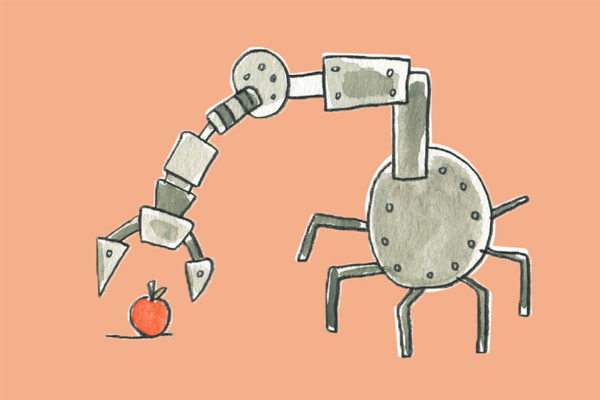By Hannah Temple.
It is difficult to get through a day without encountering the idea that we as a species and a planet are at some kind of a tipping point. Whether for environmental, economic or social factors (or a mix of them all) there is a growing collective of voices claiming that the fundamental ways in which we live our lives, often linked to the structures and incentives of capitalism, must change. And they must change both radically and soon if we are to protect the future of the human race. Paul Mason’s PostCapitalism: A Guide to Our Future adds another compelling voice to this increasingly hard-to-ignore din. However, what makes this book refreshingly different is the tangible picture it paints of our possible path to a “postcapitalist” world. Mason’s belief is that capitalism’s demise is in fact already happening, and it is happening in ways we both know and like.
The book starts by looking at Kondratieff waves– the idea developed by Nokolai Kondratieff in the 1920s that capitalist economies experience waves or cycles of prosperity and growth, followed by a downswing, characterised by regular recessions, and usually ending with a depression. This is then followed by another phase of growth, and so on and so on. Many people, especially those that benefit from the current economic model, argue that what we are experiencing currently is just another of these regular downswings and we all just have to hunker down and ride the wave until the going gets good again. Mason, however says that even a quick glance at whatever form of evidence takes your fancy (global GDP growth, interest rates, government debt to GDP, money in circulation, inequality, financialization, productivity), demonstrates that the 5th wave that we should currently be riding has stalled and is refusing to take off.
The shift from the end of one wave and the start of a new one is always associated with some form of societal adaptation. Usually this is through attacks on skills and wages, pressure on redistribution projects such as the welfare state, business models evolving to grab what profit there is. However, if this de-skilling and wage reduction is successfully resisted then capitalism is forced instead into more fundamental mutation- the development of more radically innovative technologies and business models that can restore dynamism based on higher wages rather than exploitation. The 1980s saw the first adaptation stage in the history of long waves where worker resistance collapsed. This allowed capitalism to find solutions through lower wages, lower-value models of production and increasing financialization and thus rebalance the entire global economy in favour of capital. “Instead of being forced to innovate their way out of the crisis using technology, the 1 per cent simply imposed penury and atomization on the working class.”
This failure to resist the will of capital and the subsequent emergence of an increasingly atomised, poor and vulnerable global population is part of Mason’s explanation for our stalled 5th wave. The other half of the explanation comes from the nature of our recent technological innovations. Mason contends that the technologies of our time are fundamentally different to those of previous eras in that they are based on information. This is significant in that information doesn’t work in the ways that printing presses or telephones or steam engines work. Information throws all the basic tenets of capitalism- supply and demand, ownership, prices, competition- on their heads. Information technology essentially works to produce things that are increasingly cheap or even free. Think of music- from £10 for a CD in 1997 to 95p for an iTunes track in 2007 to completely free via sharing sites like Spotify in 2017. Over time, Mason claims the market mechanism for setting prices for certain information-based goods will gradually drive them down and down until they reach essentially or even actually zero – eroding profits in the process.
Capitalism’s response to this shift has basically been to put up lots of walls and retreat to stagnant rentier activity rather than productivity or genuine innovation. Legal walls such as patents, tariffs and IP property rights are used to try to maintain monopoly status so that profits can continue to be earnt. Politics is following in the same path with some real walls as well as plenty of metaphorical ones in the form of disintegrating international agreements and partnerships, import tariffs, immigration caps and so on. “With info-capitalism a monopoly is not just some clever tactic to maximise profit, it is the only way an industry can run. Today the main contradiction in modern capitalism is between the possibility of free, abundant socially-produced goods and a system of monopolies, banks and governments struggling to maintain control over power and information”.
However, what seems to be part of the problem is, according to Mason, a critical part of the solution. These new sharing, or “information” technologies, have led to what Mason sees as an already emerging postcapitalist sector of the economy. Time banks, peer-to-peer lending, open-source sharing like Linux and Wikipedia and other technologies are not based on a profit-making motive and instead enable individuals to do and share things of value socially, outside of the price system. This peer-to-peer activity represents an indication of the potential of non-market economies and what our future might look like.
Mason argues that we have now reached a juncture at which there are so many internal and external threats facing our existing system- from climate change, migration, overpopulation, ageing population, government debts- that we are in a similar position to that faced by feudalism before it dissolved into capitalism. The only way forward entails a break with business as usual. Mason emphasises that it is important to remember that capitalism is not a “natural” state of being, nor has it gone on for such a long time. We live in a world in which its existence is seen to be unquestionable but we must take time to teach our brains how to imagine something new again. For Mason, in rather sci-fi fashion, this “something new” is called Project Zero.
Project Zero aims to harness to full capabilities of information technologies to:
– Develop a zero-carbon energy system
– Produce machines, services and products with zero marginal costs (profits)
– Reduce labour time as close as possible to zero
“We need to inject into the environment and social justice movements things that have for 25 years seemed the sole property of the right: willpower, confidence and design.”
Mason provides us with a comprehensive and exciting list of activities to be cracking on with to shape our new world. Some of his ideas are excitingly fresh and new such as the development of an open, accurate and comprehensive computer simulation of current economic reality using real time data to enable the planning of major changes. Others are more familiar such as the shifting of the role of the state to be more inventive and supportive of human wellbeing by coordinating infrastructure, reshaping markets to favour sustainable, collaborative and socially just outcomes and reducing global debts. He also supports the introduction of a universal basic income, the expansion of collaborative business models with clear social outcomes and the removal of market forces- particularly in the energy sector in order to act swiftly to counter climate change. He calls for the socialisation of the finance system. This would involve the nationalization of central banks, setting them explicit sustainability targets and an inflation target on the high side of the recent average to stimulate a “socially just form of financial repression”. It would also involve the restructuring of the banking system into a mixture of non-profit local and regional banks, credit unions and peer-to-peer lenders, a state-owned provider of financial services and utilities earning capped profits. Complex, financial activities should still be allowed but should be separate and well-regulated, rewarding innovation and punishing rent-seeking behaviour.
This push towards a system that rewards and encourages genuine innovation underlies most of Mason’s suggestions for our postcapitalist future. He contends that, if we continue down our current path, it will suffocate us and lead to a world of growing division, inequality and war. We already have systems for valuing things without prices. Working on optimising the technologies we have available to expand these systems, allowing us to live more sustainable, equal and happy lives, Mason argues, should be the key focus for us all.
This book review of Paul Mason’s PostCapitalism by Hannah Temple is originally posted at Rethinking Economics.

